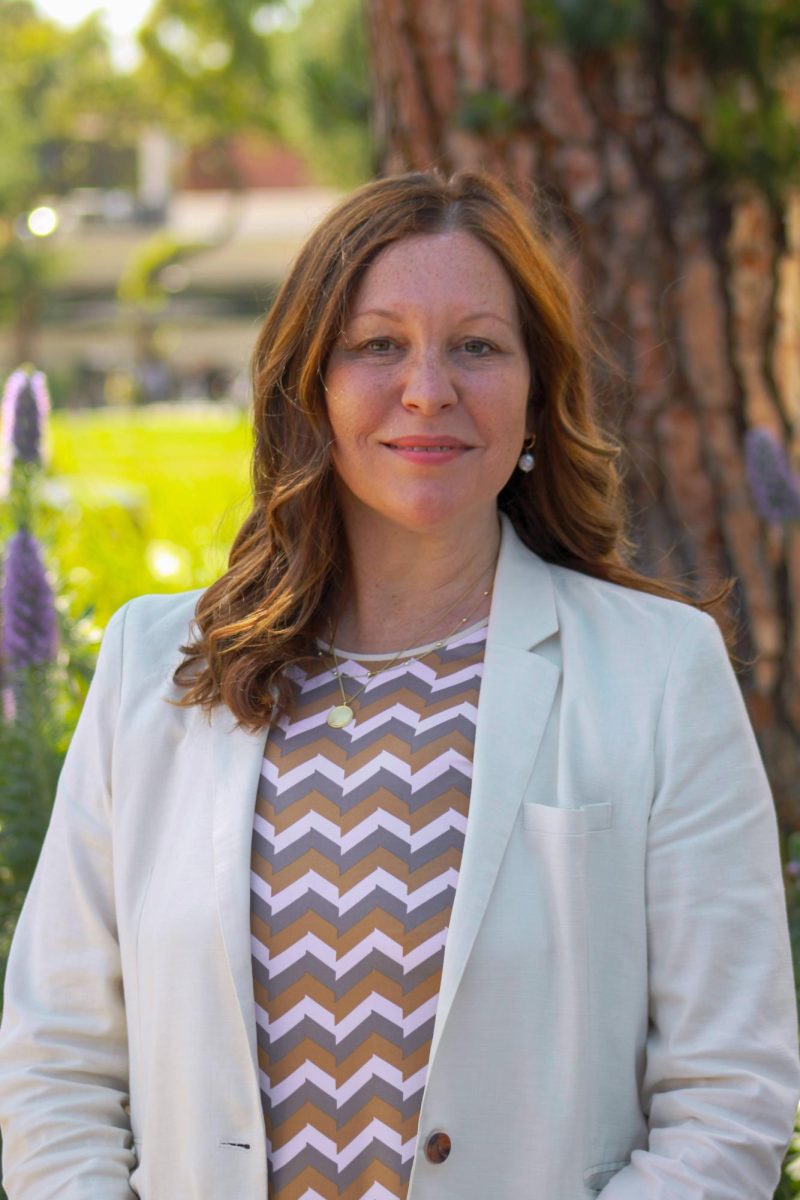By Adriana Ruvalcaba
Copy Editor
The chain-link fences surrounding CSU Bakersfield’s new Demonstration Gardens will be coming down in the upcoming weeks. The CSUB Sustainability Committee founded the project to address concerns involving the university’s water usage on its landscaping. The Demonstration Gardens are located on three parts of campus: south of the Walter Stiern Library, in front of the Science I, and in front of the Science III.
The project focuses on irrigation, which consumes the most water on campus. The Demonstration Garden replaces high-water demanding trees and plants with ground covers such as bark or gravel. The gardens also include drought-tolerant plants that not only save water, but are aesthetically appealing.
Patrick Jacobs, Associated Vice President of Facilities and co-chairs for the Sustainability Committee, said that compared to the grass in those three areas, the university has already reduced the amount of water by 80 percent.
“What we’re trying to demonstrated to students and the community at large is that you can install landscape areas that don’t use a lot of water and are attractive,” said Jacobs.
According to Jacobs, the committee applied and received a grant of $243 thousand dollars from the Chancellors Office to be used for water conservation projects. The grant money came from the state, which has a budget of about $3 million dollars to be spent on projects relating to sustainability.
Associated Professor of Economics S. Aaron Hedge, who is also the Director of Environmental Resource Management and co-chairs with Jacobs on the Sustainability Committee, said that even with the recent rains from El Nino, the drought is still an issue. The Demonstration Gardens are a way to address the problem.
“First, it’s mandated by the state. Second, it’s what we need to do to deal with the situation,” said Hedge.
He said the best way CSUB can educate the community and students is by example.
“The drought forces us to be more intentional with the things that we do,” said Hedge.
Student and the Vice President of University of Affairs Anish Mohan, 21, said he thinks the university’s initiatives are amazing and cites the Demonstration Garden as a step in the right direction.
“Considering the amount of water that it takes to water grass in general…we’re saving a lot of water,” said Mohan.
Senior Tricia Cervantes, 21, said she thinks the project is a great way to help the state of CA and likes the appearance of the Demonstration Garden so far.
“The one outside of the library is better than the no grass we had before…it’s nice they added some plants there. Hopefully they’ll maintain it,” said Cervantes.
Her only concern is the wind could possibly blow the bark where students walk or it will be difficult to remove the leaves when they fall on the garden.
Senior Christopher Enriquez, 23, said he agrees with the plan, but is sadden by some of the changes.
“I really support the project and I understand the purpose of the project and the benefits of it because of the drought, but I’m really sad about the tree not being there,” said Enriquez.
Enriquez is referring to the tree that was in front of the Science I building. He is a nursing major, and the tree faced the nursing building as well. He said that he and his friends would sit under the tree and relax after class. Enriquez also heard some of his friends express the same feelings.
Hedge said that when the university was planned out 45 years ago, nobody anticipated a drought. Many of the trees, floras, and plants that were on campus were chosen for aesthetic reasons and required a large amount of water to survive. Unfortunately, the Coastal Red Wood tree that was in front of Science I needed a great deal of water. Both Hedge and Jacob understand the students’ reactions, but the decisions to remove the trees were done responsibly.
“We had non-drought tolerant plants in a place that is essentially a desert,” said Jacobs.
Jacobs said an arborist did come to CSUB to examine the trees, deciding whether the trees required low or high amounts of water, and if they could be transported. There are still about 15 trees left around Science III. There are also many Sycamore trees left since they can tolerate low-water levels.
As for maintenance and up-keep of the gardens, Jacob doesn’t believe it’ll be a problem.
“It’s less than the maintenance we’re doing now, considerably less,” said Jacobs.







